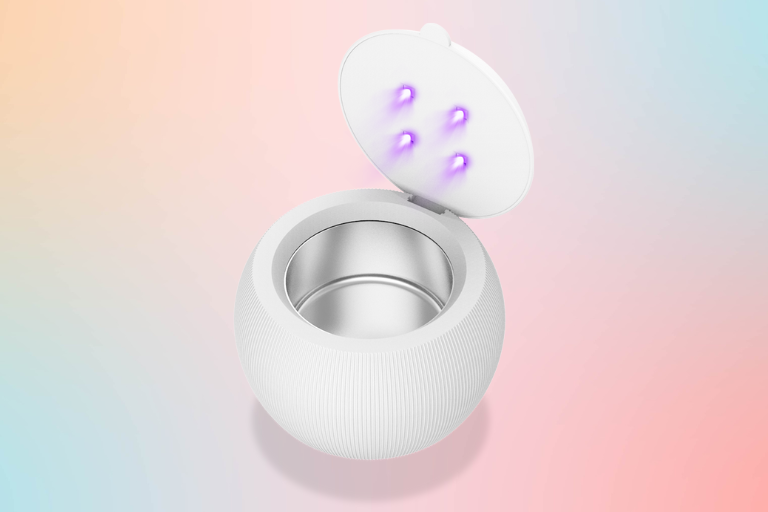How to Clean Retainers with an Ultrasonic Cleaner
Introduction
Retainers play an important role in maintaining your new smile after braces. Like braces, retainers need regular cleaning to keep them hygienic and prevent damage. Ultrasonic cleaners provide an easy, effective way to clean retainers thoroughly.
In this blog post, we’ll cover everything you need to know about using an ultrasonic cleaner to keep your retainers sparkling clean. We’ll go over how ultrasonic cleaning works, why it’s recommended for retainers, step-by-step instructions, and tips for optimal results.
How Ultrasonic Cleaning Works
Ultrasonic cleaners use high frequency sound waves to agitate and dislodge contaminants from the surface of objects submerged in a liquid cleaning solution. This process is called cavitation. Here’s a quick overview of how it works:
- The ultrasonic cleaner unit contains a transducer that converts electrical energy into vibrations.
- These vibrations are transmitted through the liquid solution inside the cleaner tank, creating very small bubbles.
- As the bubbles rapidly form and collapse, they create tiny vacuum bubbles and shockwaves.
- The bubbles and shockwaves scrub away contaminants stuck on surfaces of submerged objects.
- The debris is suspended in the solution so it can be easily rinsed away.
Benefits for Retainer Cleaning
Ultrasonic cleaning offers important advantages for cleaning retainers:
- Thorough cleaning: Ultrasonic waves reach tiny crevices in the retainer material that are difficult to clean manually.
- Safe for retainers: Ultrasonic cleaning won't damage or warp retainer material like some other methods.
- Fast: A cleaning cycle takes just 5 minutes.
- Easy: Just fill the tank, drop in retainers, and turn on the machine.
- Hygienic: Ultrasonic cleaning kills 99.9% of bacteria and germs.
How to Clean Retainers with an Ultrasonic Cleaner
Follow these simple step-by-step instructions for cleaning retainers with an ultrasonic cleaner.
Supplies Needed
- Ultrasonic cleaning unit
- Tap water
- Retainer cleaning solution (optional)
- Small brush (optional)
- Drying stand, towel or case
Step-by-Step Instructions
- Fill tank: Fill the ultrasonic cleaner tank with cool water. Avoid using tap water which can leave mineral deposits on retainers.
- Add cleaner (optional): Add the recommended amount of retainer cleaning solution to the water. This helps boost cleaning effectiveness.
- Soak retainers: Gently place retainers into the solution. Make sure they are fully submerged.
- Run cleaning cycle: Set the timer according to manufacturer recommendations, usually 3-5 minutes. Turn on the ultrasonic cleaner to start the cleaning cycle. The solution will bubble as the ultrasonic waves get to work scrubbing your retainers.
- Rinse: When the cycle is complete, remove retainers from the solution. Rinse them thoroughly under cool running water.
- Brush: Use a small brush to gently scrub away any remaining debris if needed.
- Dry: Allow retainers to air dry on a clean towel or place them on a drying stand. Don't use hot air to speed drying as this can warp the plastic.
- Store: Once fully dry, return retainers to their case for storage.
Tips for Best Results
Follow these tips to get the most effective, safe cleaning:
- Clean retainers after every time they are worn to prevent bacteria buildup.
- Choose an ultrasonic cleaner designed specifically for retainers and dental appliances.
- Always use fresh cool distilled or filtered water in the tank.
- Replace the cleaning solution after every 1-2 cleaning cycles.
- Follow manufacturer instructions for solution amounts and cycle times.
- Avoid putting metal retainers in an ultrasonic cleaner as this can damage the unit.
- Take care handling retainers as they can be fragile when wet.
Choosing an Ultrasonic Retainer Cleaner
Look for an ultrasonic cleaner designed specifically for cleaning dental appliances like retainers and aligners. Features to look for include:
- Tank capacity: large enough to fully submerge retainers.
- Cycle timer: Variable 3-5 minute cleaning cycles.
- Temperature control: Option to use cool water to avoid warping.
- Auto shut-off: For safety when cycle is complete.
- Drain valve: For easy emptying and rinse between cycles.
- Warranty: At least 30 days manufacturer warranty.
The Takeaway
Keeping your retainers clean is crucial for oral health and maintaining your smile. Ultrasonic cleaners provide fast, safe, effective cleaning that removes bacteria and plaque buildup from the intricate surfaces of retainers.
Look for a purpose-built ultrasonic retainer cleaner and follow the steps for filling, soaking, rinsing and drying. Clean retainers after each use for fresh, hygienic results. With the convenience of ultrasonic cleaning, you have no excuse for not keeping your retainers squeaky clean!


